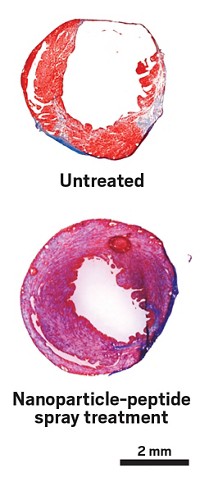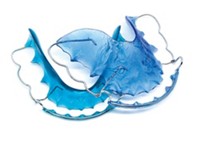Advertisement
Grab your lab coat. Let's get started
Welcome!
Welcome!
Create an account below to get 6 C&EN articles per month, receive newsletters and more - all free.
It seems this is your first time logging in online. Please enter the following information to continue.
As an ACS member you automatically get access to this site. All we need is few more details to create your reading experience.
Not you? Sign in with a different account.
Not you? Sign in with a different account.
ERROR 1
ERROR 1
ERROR 2
ERROR 2
ERROR 2
ERROR 2
ERROR 2
Password and Confirm password must match.
If you have an ACS member number, please enter it here so we can link this account to your membership. (optional)
ERROR 2
ACS values your privacy. By submitting your information, you are gaining access to C&EN and subscribing to our weekly newsletter. We use the information you provide to make your reading experience better, and we will never sell your data to third party members.
Polymers
Copolymer could keep catheters bacteria-free
By reducing biofilm formation and bacterial swarming, this polymer may help to avert common infections
by Mark Peplow, special to C&EN
January 31, 2023

Urinary tract catheters are widely used in hospitalized patients, but they often lead to bacterial infections. Researchers have now developed a biocompatible copolymer that could prevent bacteria from colonizing catheters and spreading into patients (Sci. Adv. 2023, DOI: 10.1126/sciadv.add7474).
Catheters coated with antibacterial silver have previously produced disappointing results, says Andrew L. Hook, a biomaterials researcher at the University of Nottingham, and catheter-associated urinary tract infections are responsible for about $1.7 billion in annual medical costs in the US alone.
After screening about 400 acrylate polymers, Hook and his colleagues found that poly(tert-butylcyclohexyl acrylate) stopped common bacteria from forming biofilms and prevented a buildup of biomineral crystals that can block catheters. Meanwhile, poly(2-hydroxy-3-phenoxypropyl acrylate) inhibited the swarming behavior that allows some bacteria to spread along the catheter to infect patients.
The researchers united these two polymers into a copolymer, fine-tuning the proportions to maximize their combined effects. The copolymer also reduced the accumulation of fibrinogen, an inflammation-response protein produced by patients that can help bacteria stick to catheter surfaces.
Overall, the copolymer offered a 15-fold reduction in biofilm formation, compared with the silicone typically used in catheters. “To the best of our knowledge, this is the first material that can prevent swarming, and biofilm formation, and biomineralization,” Hook says. The inexpensive copolymer could be coated onto silicone catheters, and the team now plans to test the material in vivo.





Join the conversation
Contact the reporter
Submit a Letter to the Editor for publication
Engage with us on Twitter